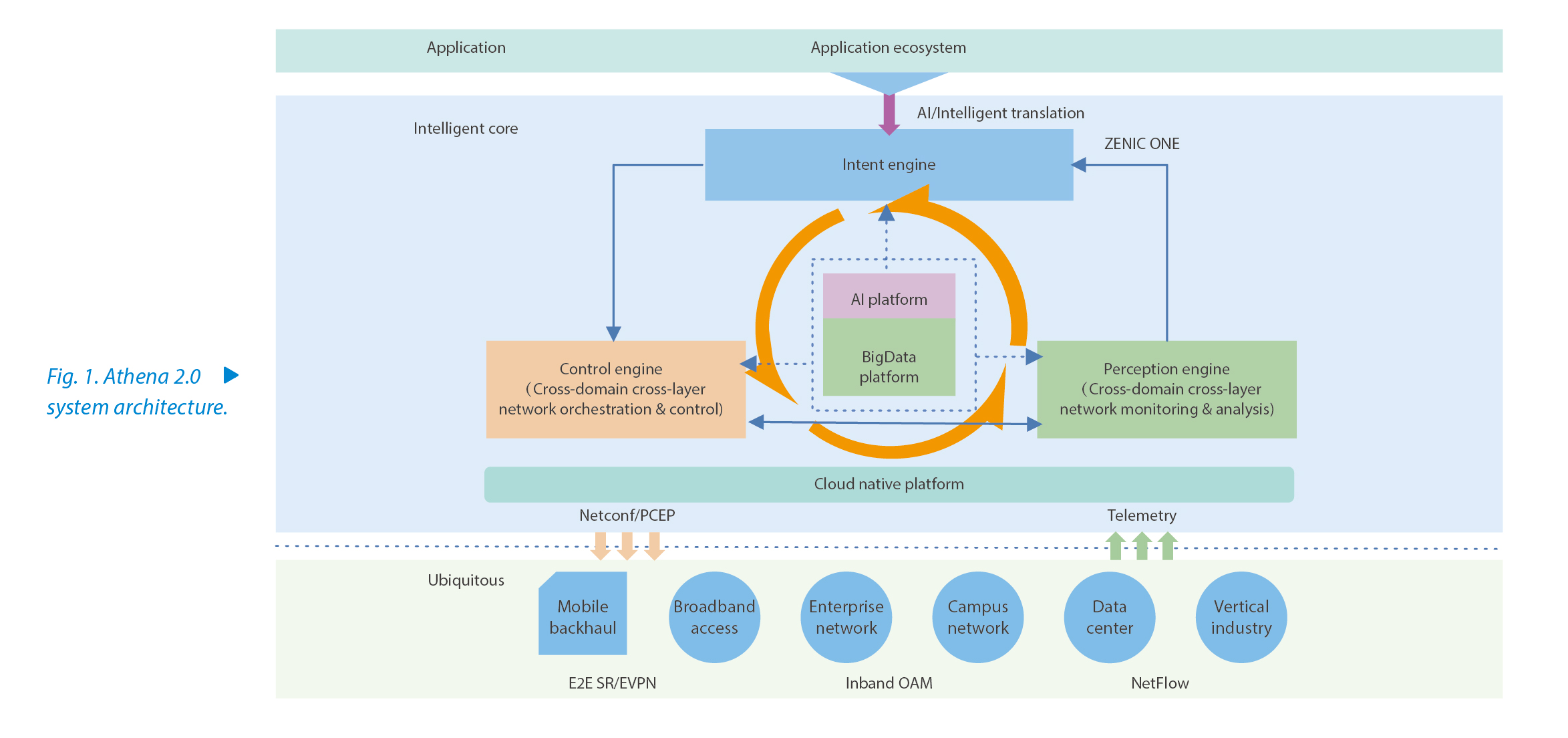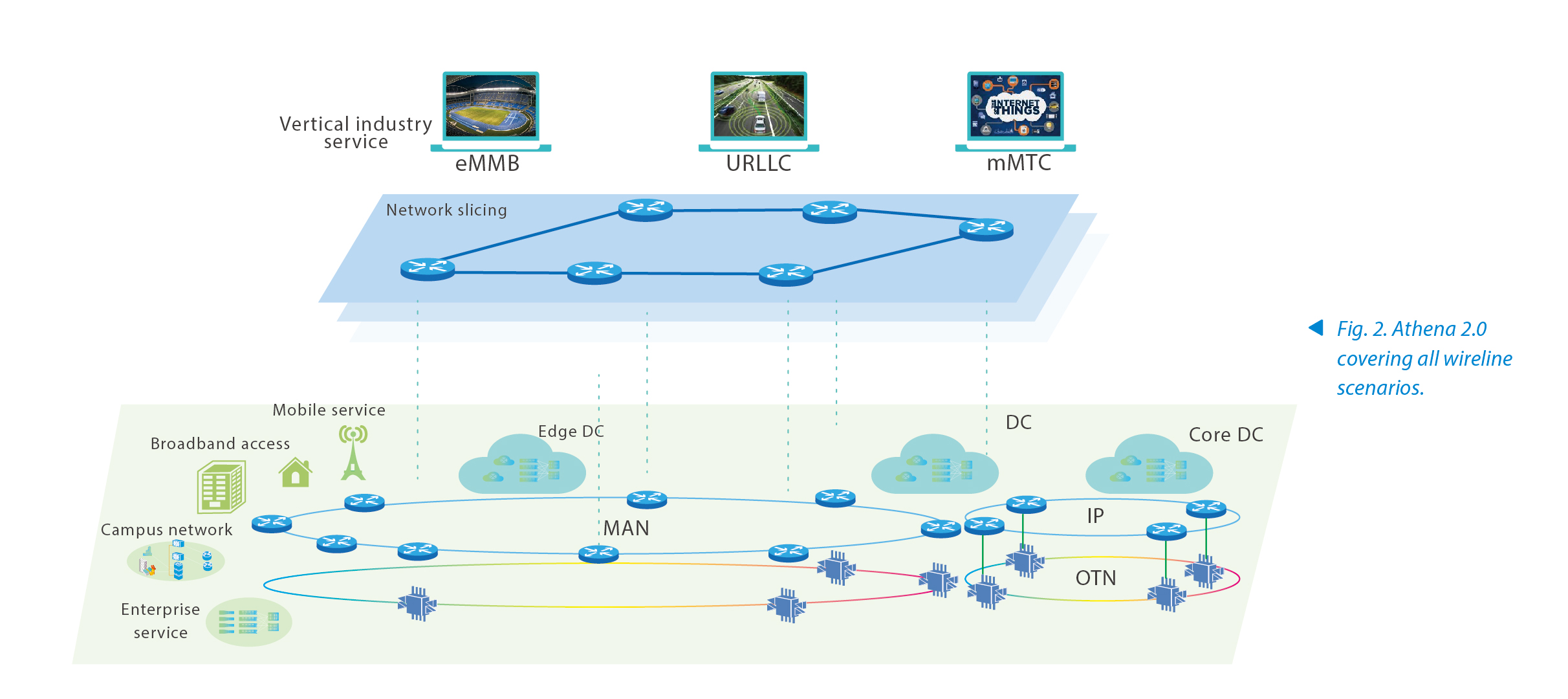With the gradual commercial use of 5G networks, three challenges have become increasingly apparent and urgent. The first challenge is complex network management. The network needs to meet users' higher requirements for service quality, including performing real-time perception, analysis, processing and recovery for traffic, packet loss, delay, and jitter, while achieving fast deployment, agile adjustment, and timely expansion. The second challenge is maximizing network benefits. With unprecedented pressure placed on network resources, the network needs to analyze resource utilization in real time, accurately predict future changes, and optimize network resources. The final challenge lies in user experience. To ensure a high-quality user experience, functions like fast service provisioning, automatic restoration and optimization are critical. Traditional telecom technologies and O&M modes cannot tackle these challenges. As the industry explores into new technologies, intelligence has been recognized as the core capability of 5G and future networks.
Based on a deep understanding of the new requirements on the 5G wireline network and strong technical strength in the fields of SDN, machine learning, big data, knowledge graph and intent-based networking (IBN), ZTE proposes its intelligent network solution uSmart Athena 2.0 (Athena 2.0 in short). As the wireline network part of ZTE's autonomous evolving network solution, it aims at constructing a simple, full-lifecycle, IBN-oriented new-generation wireline network to eventually realize the autonomous network.
Athena 2.0 Architecture
Athena 2.0 consists of ZENIC ONE, a new-generation intelligent management and control system, and a wireline equipment network with super-strong capability.
The ZENIC ONE achieves the intelligent closed-loop of the network. After users express their intent via a concise interactive interface, the system understands and translates the intent, selects the service solution, and automatically verifies it and delivers it to the physical equipment. During the entire period when the user intent exists, the system monitors the intent quality in real time and makes it visual. It can automatically identify, analyze and diagnose the network faults based on AI technology, and automatically restores the faults in accordance with the policies. At the same time, it can predict network traffic based on the network model formed by big data learning and training, and optimize service bandwidth, delay, and routes timely based on the user intent, in order to completely comply with the user intent.
The new-generation wireline equipment is the cornerstone to implement user intent. The wireline equipment can provide ultra-high capacity bandwidth, and support large-scale networking of tens of thousands of devices to meet the requirements of 8K video, cloud computing and 5G applications. It supports various network technologies such as SPN, IPRAN, OTN, switches, broadband access and microwave to meet the network requirements of different scenarios, systems and users. E2E SR technology is provided to simplify control protocols, which greatly reduces network complexity and allows fast end-to-end service provisioning. FlexE, FlexO and fine-granularity technologies are also provided to achieve network slicing at different granularities so that multiple logical networks can be created on a unified physical network to meet differentiated requirements of customers in different industries or in specific scenarios.

Referring to human intelligence, the ZENIC ONE is a system architecture of the perception, intent, control engines supported by the BigData and AI platforms (Fig. 1). The intent engine converts the intent input by the user through voice and text into the network intent expression model, and designs and verifies the solution in advance. The control engine supports network orchestration, control and management services, cross-domain cross-vendor coordination, fast end-to-end service provisioning, and multiple networks including IP, IPRAN, PTN, SPN and OTN. The perception engine through association analysis and in-depth mining of mass data truly implements end-to-end network optimization oriented to service and customer experience. Such continuous optimization improves the capabilities of traffic optimization, traffic warnings and problem prediction.
The BigData platform provides abundant data services at all levels, including structured, unstructured data services, and knowledge graph based on graph database. The AI platform is ZTE's unified AI platform uSmart Insight. It provides AI algorithms and services for the other parts of Athena 2.0 to improve the intelligence level of the whole solution, and makes continuous improvement and optimization based on the data at the BigData platform. Meanwhile, Athena 2.0 provides northbound interfaces to interconnect with the upper-layer system, which keeps the network open.
The new-generation wireline equipment has "nerve endings", including inband OAM, TWAMP, NetFlow, performance and alarm monitoring. They can capture the operating status of the network and services in real time and report it to the ZENIC ONE through the "neural network" telemetry. Based on the information captured by the "nerve endings", the ZENIC ONE can make intelligent analysis and decisions to achieve network optimization.
Athena 2.0 covers all scenarios of the wireline network, including 5G mobile service, broadband access, enterprise service, vertical industry service, cross-domain end-to-end service, campus network and data center network (Fig. 2). Its typical intelligent applications will be described below through the 5G mobile service scenario.

Intelligent Applications in 5G Mobile Service Scenario
Athena 2.0 provides a full lifecycle solution for the 5G network and supports fast network construction, fast base station service provisioning. It monitors and maintains the service IP traffic in an all-round way through inband OAM and telemetry, and relieves the difficulty in network fault location through the intelligent diagnosis tool.
Intent-Based Service Provisioning
Traditional service provisioning requires complicated service parameter configurations. The workload is heavy, the provisioning time is long, the operation is error-prone and the O&M costs are high.
The automatic service provisioning based on user intent is visible throughout. After a user selects a service scenario, the system automatically prompts the information that the user must enter, including the device endpoints to add/drop services. The system provides the recommended default SLA information according to the intent reflected by the selected scenario and the user input history. When the user intent is confirmed, the system will automatically form multiple service solutions that conform to the user's intent, covering the service type, service topology, tunnel type and route computation result. The system displays all solutions and recommends the best solution to the user. The user can select a service solution, or use the default recommended solution and let the system directly deliver it. The system converts the contents of the solution into various configuration information, and delivers the information to related devices after verifying the configuration parameters. Intent-based service provisioning, with simplified configuration and visualized process, increases the service provisioning efficiency by 80% and significantly improves user experience (Fig. 3).

Intent Maintaining Based on Real-Time Perception When the intent is created successfully, the system uses the corresponding policy to accurately perceive the service according to the SLA. Athena 2.0 uses the in-band OAM to collect the quality data such as packet loss, delay and jitter of the service flow, and reports the data to the ZENIC ONE by telemetry in seconds. The BigData platform performs data storage and association, and the perception engine performs real-time analysis and evaluation. If a service quality feature falls outside the set threshold value, accurate hop-by-hop monitoring is triggered automatically. The system automatically analyzes and determines the location of the fault (e.g. a specific faulty NE or port) based on the service knowledge graph and AI algorithm of the AI platform. If the service degrades to the set threshold and needs to be adjusted, the intent engine triggers service route optimization in accordance with the predefined policy, and delivers it to the equipment through the control engine so that the service quality can be automatically restored without user participation. The intent retaining based on real-time perception provides timely and proactive service quality management, and improves the service guarantee capability and O&M efficiency.
Intelligent Fault Diagnosis The intelligent fault diagnosis function includes two parts. The first part is to form and update the network fault knowledge base. The BigData platform is responsible for preprocessing the fault data generated by the network, including data extraction, cleansing and aggregation. On this basis, the AI platform executes the fault-associated learning algorithm to form the associated rules and update the results in the network knowledge base. In the second part, when the fault diagnosis function is triggered, the system identifies the root cause alarms based on the knowledge base rules, and then locates the root cause of the fault in accordance with the knowledge base rules, monitored data and logs, and finally provides the solutions and suggestions. The diagnosis function records the execution results and continuously improves the knowledge base, thus improving the efficiency and accuracy of fault diagnosis.
Intelligent networks have arrived with the 5G. ZTE's intelligent network solution Athena 2.0 has been put into commercial use or trial commercial use by operators across the world including China Mobile, China Unicom, China Telecom, A1 Belarus and Columbia TEF, and has been continuously improving user efficiency and user experience. ZTE will work closely with operators and partners to promote the development of intelligent networks and facilitate the advent of autonomous networks.